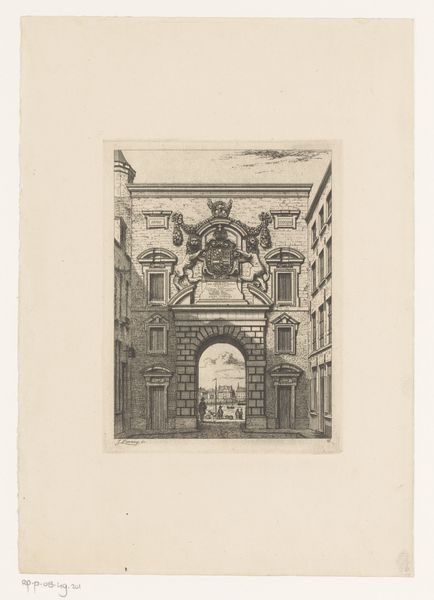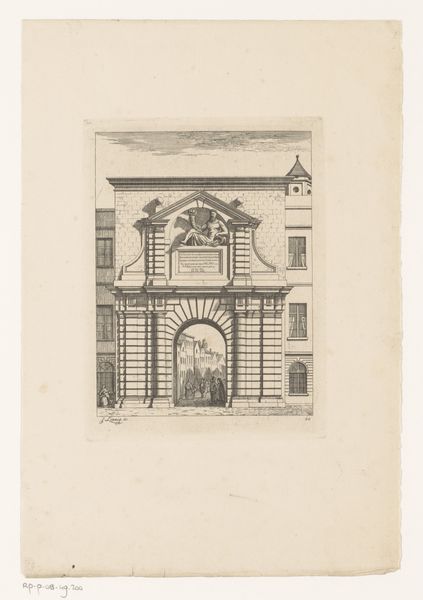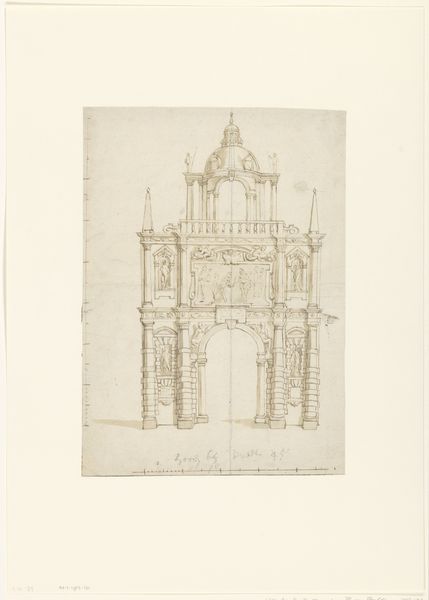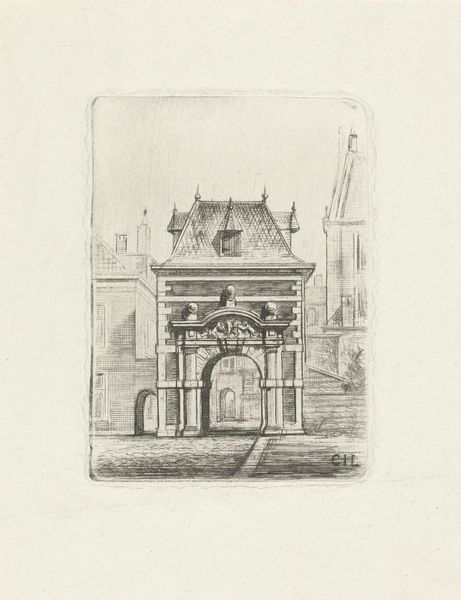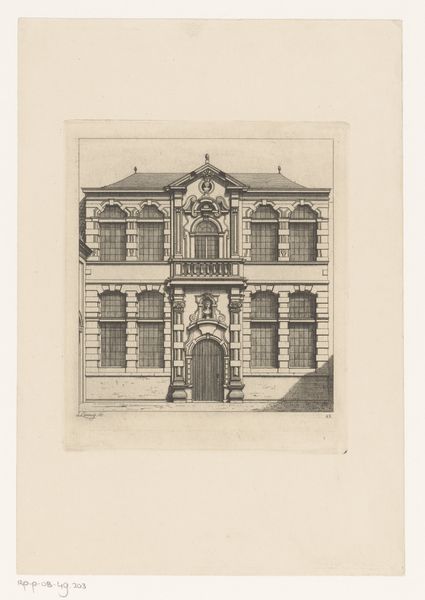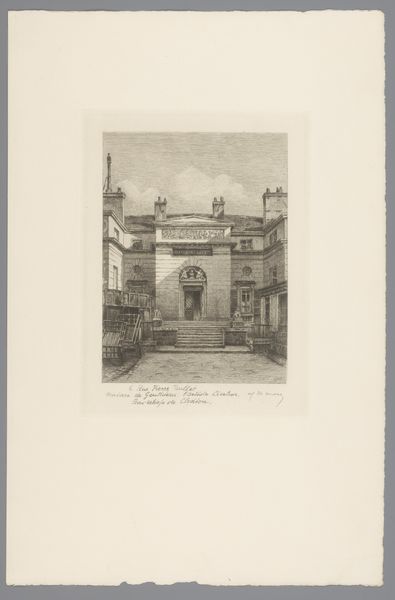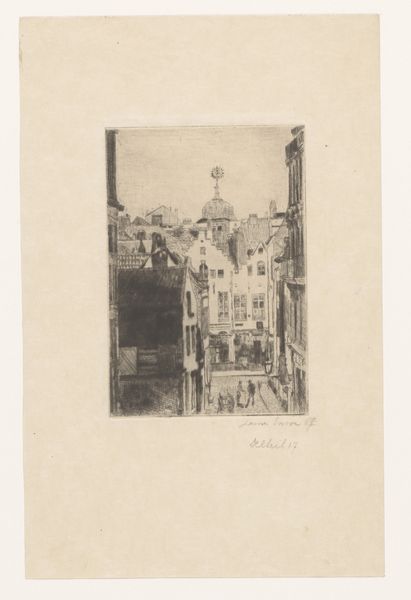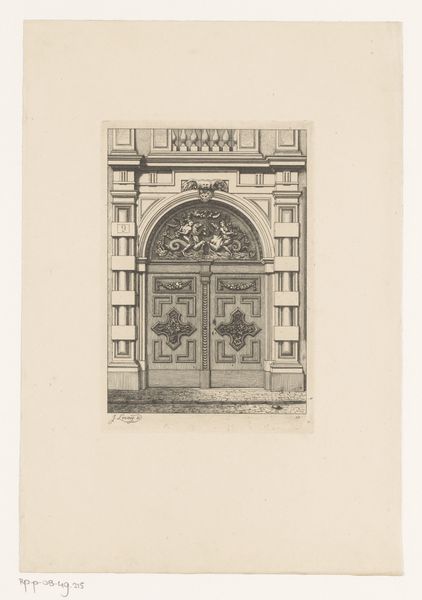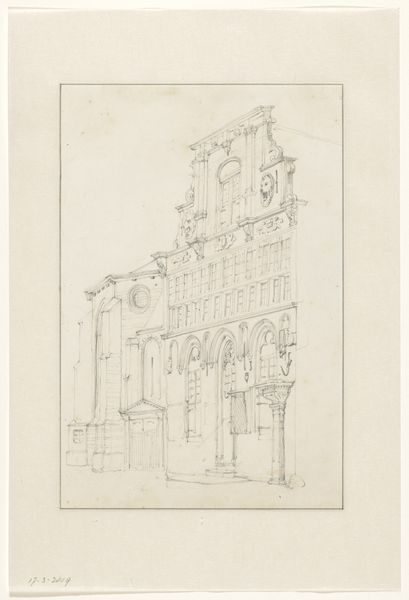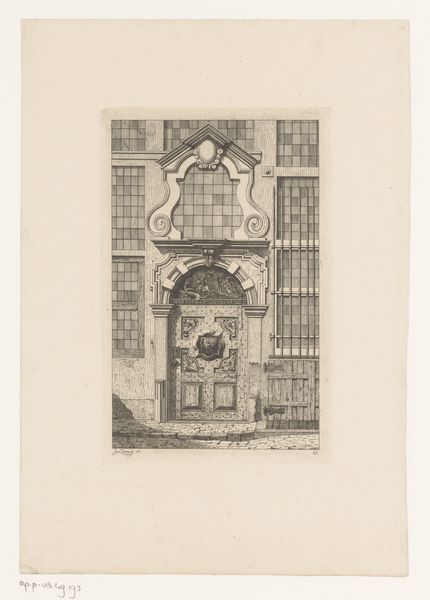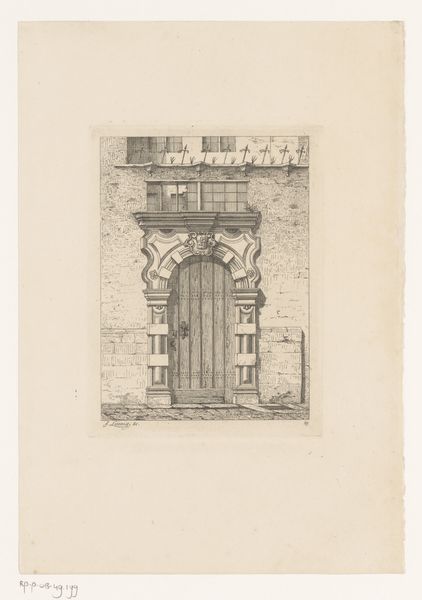
drawing, pencil, architecture
#
drawing
#
baroque
#
etching
#
form
#
pencil
#
line
#
history-painting
#
architecture
Dimensions: height 340 mm, width 255 mm
Copyright: Rijks Museum: Open Domain
Curator: This preliminary sketch from the 1640s is believed to be Theodoor van Thulden's design for a triumphal arch. Editor: My first thought? Impressive. It's austere yet embellished, detailed as hell with these small figures, so it exudes grandeur, doesn’t it? Curator: Indeed. You see he drafted this artwork using pencil and perhaps some etching. Consider the economics surrounding festival culture. The materials and labour required to construct a temporary structure like this arch were substantial, think about the workshops needed for a project such as this. Editor: Absolutely, this wasn't just about aesthetics; it's tied to power. Leopold Wilhelm’s arrival must have signaled an incredibly potent display. Consider that an arch such as this embodies dominant ideologies and political statements; it was strategic in shaping public perception and solidifying colonial power. How do you interpret the figures placed so strategically within this archway? Curator: Looking at them, one might read these figures and ornamentation through a lens of material culture: statues signify the glory of a ruler. Every sculpted relief, every carefully etched line served to communicate specific messages about Habsburg authority. Think about its relationship to commodity culture too: designs for festival architecture helped circulate ideas among architects. Editor: And beyond the Habsburgs! Arches often become flashpoints. They can trigger resistance. Consider who may be marginalized or erased through these portrayals? Indigenous populations? The lower classes whose labor helped to realize van Thulden’s plans? The narratives literally built into these forms rarely reflect full realities. Curator: So, the function of the piece, beyond the aesthetic, became a mode for shaping societal thought and even control by using art and civic construction as tools for manipulating public behavior. Editor: Van Thulden gives us more than just art; it's propaganda made manifest. Curator: Quite so. This sketch serves as an invaluable piece to deconstruct these ideas from a time gone by, doesn’t it? Editor: It offers the space, really, to re-imagine these sites—asking whose histories are showcased, or erased, through symbolic objects such as this one.
Comments
No comments
Be the first to comment and join the conversation on the ultimate creative platform.

